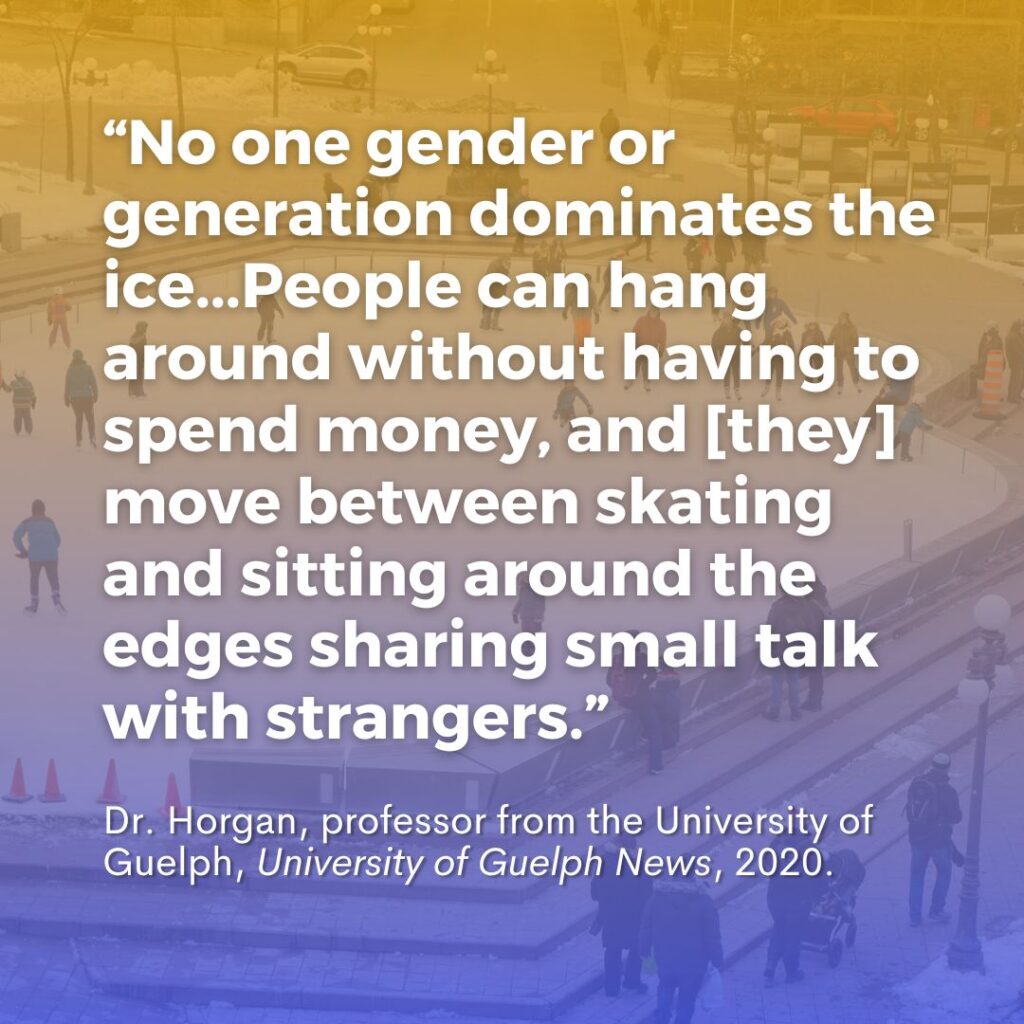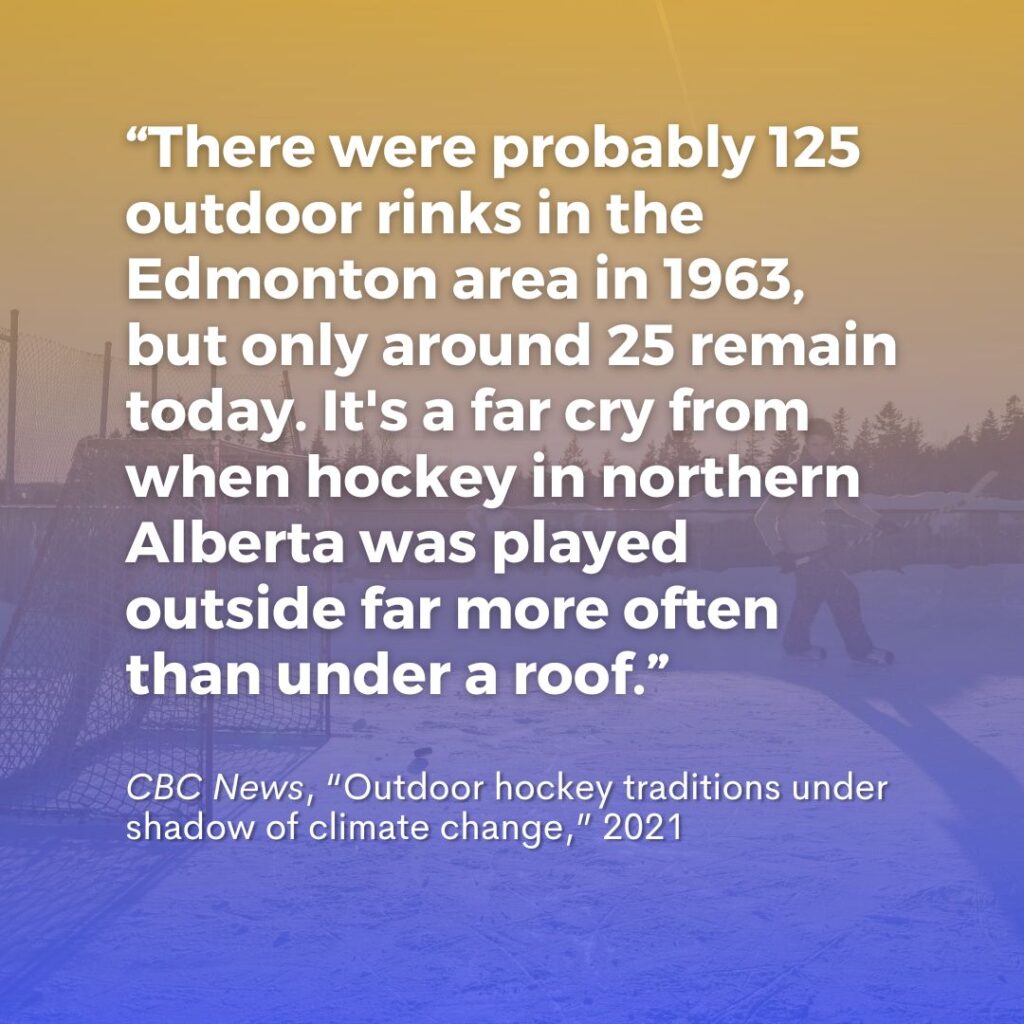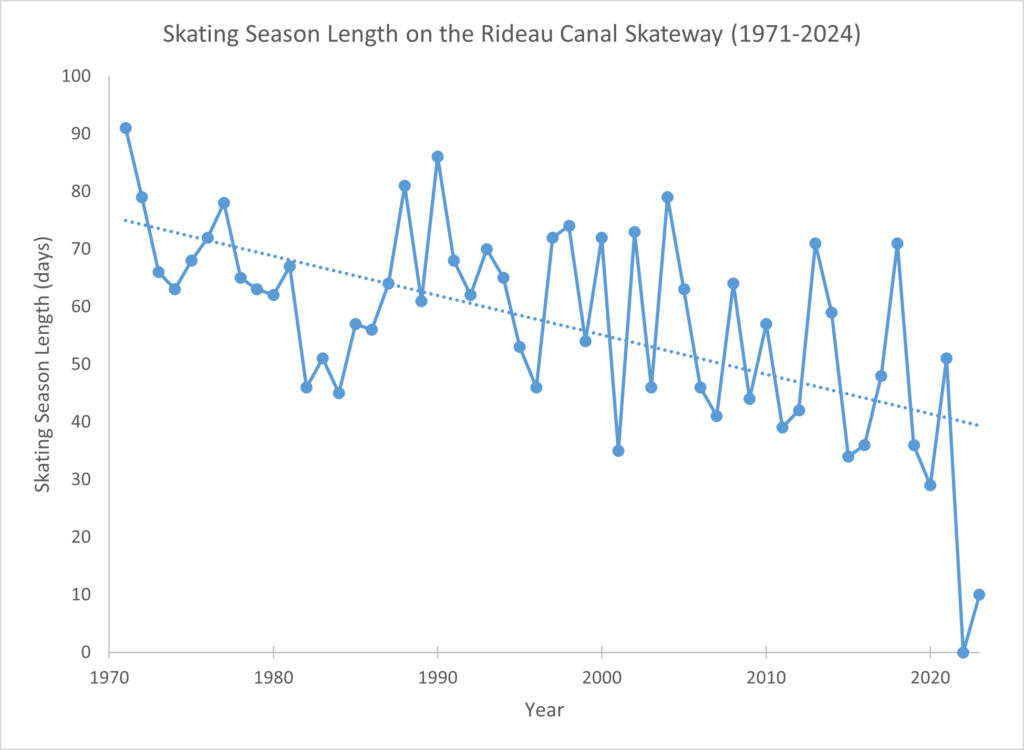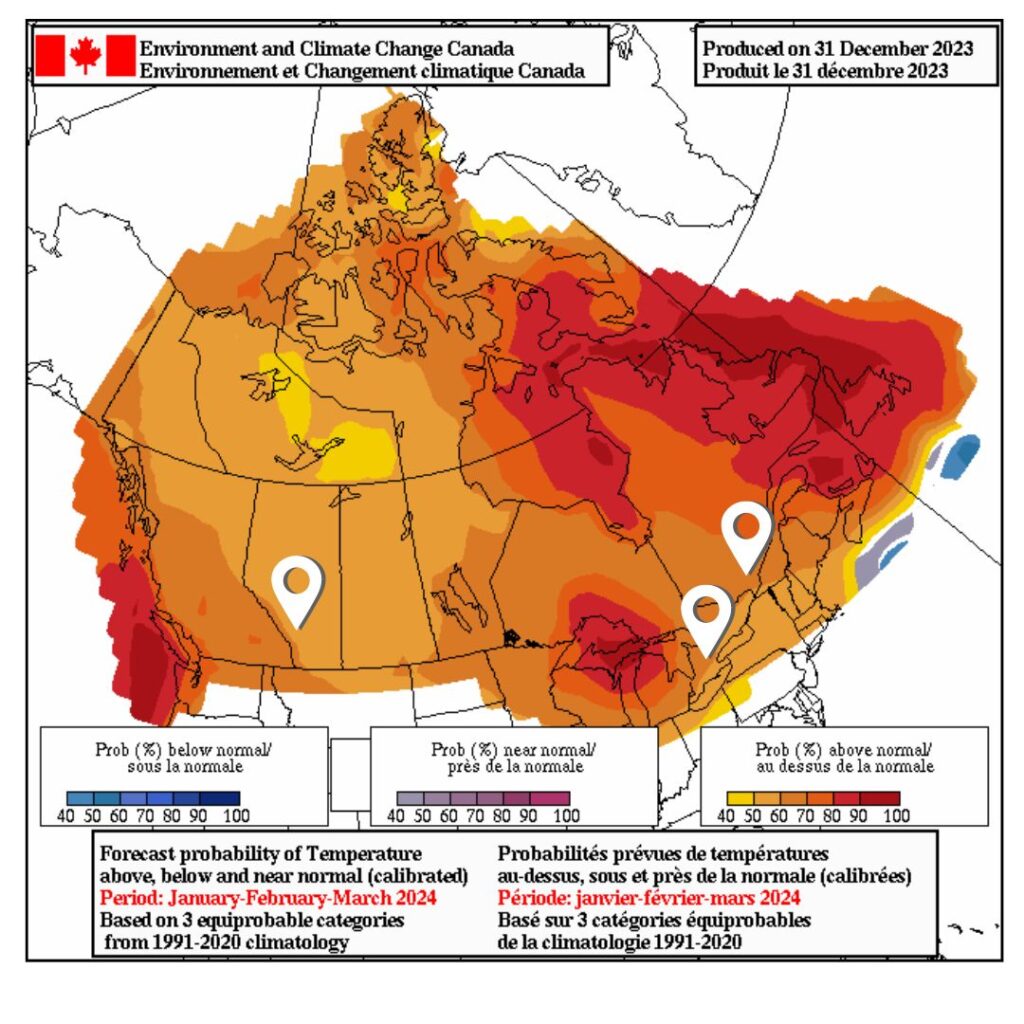References:
Brown, L. C., & Duguay, C. R. (2010). The response and role of ice cover in lake-climate interactions. Progress in Physical Geography: Earth and Environment, 34(5), 671-704. https://doi.org/10.1177/0309133310375653
Chen, Y., & She, Y. (2020). Long-term variations of river ice breakup timing across Canada and its response to climate change. Cold Regions Science and Technology, 176, 103091.
Damyanov, N. N., Matthews, H. D., & Mysak, L. A. (2012). Observed decreases in the Canadian outdoor skating season due to recent winter warming. Environmental Research Letters, 7(1), 014028.
Dickau, M., Matthews, D., Guertin, É., & Seto, D. (2020). Projections of declining outdoor skating availability in Montreal due to global warming. Environmental Research Communications, 2(5), 051001.
Environment and Climate Change Canada. 2023. Climate Trends and Variation Bulletin: Winter; 2022-2023. ISSN: 2367-9794
Horgan, M., Liinamaa, S., Dakin, A., Meligrana, S., & Xu, M. (2020). A shared everyday ethic of public sociability: Outdoor public ice rinks as spaces for encounter. Urban Planning, 5(4), 143-154.
National Capital Commission. (N.d.). Rideau Canal Skateway – History of the Rideau Canal Skateway. Accessed January, 2024 from: https://ncc-ccn.gc.ca/places/history-rideau-canal-skateway
Ottawa Citizen. 2024. NCC closes Skateway for season. Accessed February 27, 2024 from: Skateway closes for the season Sunday at 10 p.m. | Ottawa CitizenZhang, X., Flato, G., Kirchmeier-Young, M., Vincent, L., Wan, H., Wang, X., Rong, R., Fyfe, J., Li, G., Kharin, V.V. (2019): Changes in Temperature and Precipitation Across Canada; Chapter 4 in Bush, E. and Lemmen, D.S. (Eds.) Canada’s Changing Climate Report. Government of Canada, Ottawa, Ontario, pp 112-193.









